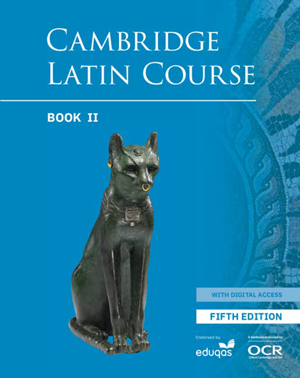
How to teach Latin? The debate continues to excite and polarise viewpoints. The perpetual tug of war between grammar-translate aficionados and supporters of the reading method and of almost – but not quite – comprehensible input, has been joined by the passionate swell of those espousing teaching Latin in much the same style as a modern foreign language.
The Cambridge Latin Course (CLC), first published in 1970 draws on a ‘familiar’ vocabulary of derivatives, largely incomprehensible now to the average comprehensive pupil that makes up my classes. For many of them, reading a book is a dull task forced on them irregularly by school. The textbook provides passages in English which the modern-day year 7 or 8 often struggles to read. It is a yardstick to measure the shift in educational priorities. Having said that, it could be argued that all too few pupils were, in the 1970s, even offered Latin. So, to some extent the Cambridge Latin Course offered a hope of something more democratic.
Book II has always been controversial. I know many teachers who have abandoned the CLC after Book I, citing the hugely off-putting length of passages – far beyond the requirements of GCSE, the unengaging story, etc. They have moved to de Romanis, toyed with the Oxford Latin Course, explored the new and defiantly plebian-based Suburani or created their own courses. I myself have stayed with CLC Book II, but have always adapted the material – creating easy exercises using Stage 1 and 2 vocabulary to consolidate grammar, including the ablative along with the genitive when it can no longer really be ignored in Stage 17, and so on.
Consequently, I was intrigued by the UK fifth edition of CLC Book II and wondered to what extent these aspects had been addressed.
Like the UK 5th edition of Book I, the book now takes a broader interest in the lives of the women and others oppressed by the Romans, even in the first set of ‘Model sentences’. There have been significant changes to the texts. In Stage 13, for example, the very long ‘Bregans’ text has, mercifully, been split into two sections. ‘tres servi’ has been replaced by a story providing the background to Salvius’ ‘coniuratio’. The omission of ‘tres servi’ means of course, that should you wish to show the video, you may need to supplement it with a worksheet giving the original text.
Disturbingly for those of us who have well established resources for learning vocabulary for each stage, there have been significant changes to the vocabulary checklists and about a third of the words in Stage 13, for example, are different. The ‘error’ in the name Cogidubnus has at last been amended. He is now, correctly, ‘Togidubnus’ and has acquired an anachronistic Queen Catia.
In terms of the socio-cultural elements, there appear to be more sections, including the ‘talking heads’ that appear in the new edition of Book I. I think this makes the information more digestible and easier to work into lessons. There are many new and interesting illustrations, including, somewhat concerningly, a watermarked ‘getty images’ picture on p.84. Personally, I really like a lot of the additional material. I was thrilled to see sections on the Rosetta Stone, the Fayum portraits and extended background information on Romano-Egyptian culture and religion. The section on Roman medicine has also been hugely improved. I like the ‘Thinking points’ that have been added into the text and demarcated in helpful boxes. The vocabulary used in the English sections is certainly high-level and is likely to cause problems for students who struggle with reading. However, long sections tend to be divided up and the use of different fonts is likely to reduce the stress a little. In addition, a change to sans serif fonts should make reading significantly easier for many.
The textbook comes with five years’ use of a ‘digital resource’. It is easy to access through instructions on the inside front cover. Setting up ‘Classes’ however, proved complicated and I was unable therefore to work out its benefit. I had assumed that this digital resource might be a UK equivalent to the North American ‘Elevate’ including worksheets, videos and texts. However, what is provided is a digital, online version of the student book. The resource allows you to ‘write’ over the electronic textbook in red, blue, yellow, or black; bookmark pages; erase marks; and enlarge sections to display the text on an electronic board.
At £19.95 per volume the Cambridge Latin Course covers the whole GCSE syllabus in volumes 1 to 4. This makes it more expensive than, for example, the Suburani course which in 2 volumes (of £20 each) covers the whole GCSE course. However, the Cambridge Latin Course covers a broader syllabus than is required for the Eduqas Latin GCSE exam (and in fact WJEC Eduqas endorses this volume) so could be more suitable for those taking the OCR exam and looking towards A Level.
Even with the offputtingly long texts; and the need to revise all of my vocabulary learning, teaching, and testing resources, if my school had £600 that I could spend on text books, I would be very tempted to replace my stash of 4th edition CLC II and I would really enjoy teaching this new edition.


